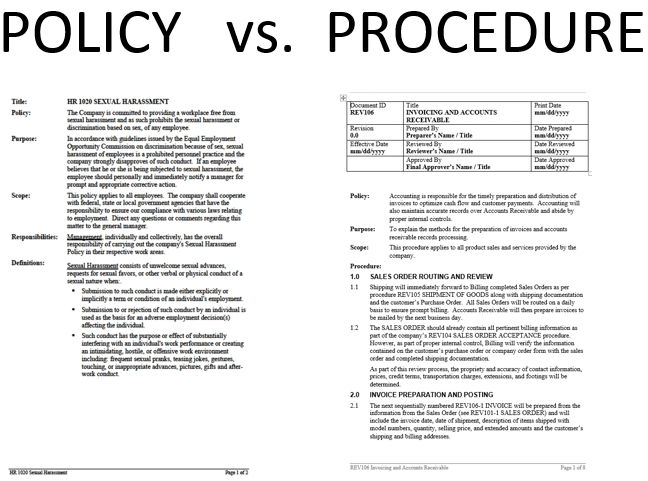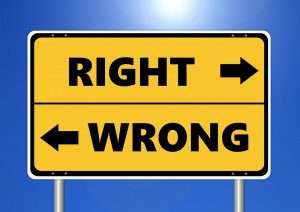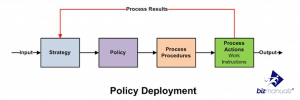Are Policies and Procedures Important?

Policies and procedures form the backbone of your organization. They are both similar and different, but they serve a similar purpose: to establish guidelines for what employees should do in specific situations. But there’s more to creating good policies and procedures than just copying and pasting from another company’s template! This article will explain how policies and procedures get written, why they’re important, who typically writes them, how long they should be (and why), and what should be included in each type of document.
What is the difference between policies and procedures?
A policy is a statement of what the organization believes to be true, or what it wants its employees to believe. A procedure is specific instructions on how to do something. For example, if your company has a policy that all employees must have their hair cut above the collarbone, then you would have written this as part of your employee policies.
These are typically found in your employee handbook; if there was no such policy in place and you wanted one put into place for safety reasons (for example), then you would write it as part of your procedures document.
Procedures are usually written by those who will use them rather than those who create them; however, sometimes it makes sense for senior leadership members or other high-level individuals within an organization who are familiar with all aspects of its daily operations.
Therefore know what needs changing–to draft new policies themselves instead of waiting for lower-level staff members like HR managers or executive assistants who may not know enough about everything else going on around them at any given time without first being informed by someone else
Who typically writes a policy or procedure?
The answer depends on the organization. In some cases, policies and procedures are written by managers or other individuals in the company who understand how things work in their specific department or area of responsibility. In other cases, a specialist may be brought in to write policies and procedures for an entire organization (or sections thereof).
This can be helpful if your organization has many different departments with unique needs for their policy documents; having one person oversee all of them will ensure consistency between them all.
In either case–whether you’re writing policies and procedures yourself or working with someone else using procedure management software. It’s important to remember that these documents should reflect your company’s values as well as any legal requirements that apply specifically to your industry/location/etcetera (if applicable).
Why are policies and procedures important?
Policies and procedures are important because they help to reduce the risk of mistakes, ensure that everyone is on the same page, and help people to do their jobs more efficiently and lead to a consistent process workflow.
The following are some examples of how this can happen:
- A policy could be used to explain how an organization should handle customer complaints. This will ensure that all customers receive the same treatment, regardless of where they make their complaint or who handles it internally; it also ensures that any staff training needed for handling customer complaints is consistent across all staff members who may deal with these issues.
- A procedure could be used for handling inventory management issues within an organization’s warehouse system (for example). This would allow employees at each level in this process–from receiving goods into inventory through shipping them out again–to follow a set procedure so that everything happens consistently without mistakes being made along any step of this process (e.g., ordering too much or too little product).
What should be included in a policy or procedure?

employment policies
When writing a policy or procedure, it’s important to include the following information:
- The goal of the policy or procedure. Why does it exist?
- The scope of the policy or procedure. Who does it apply to and what types of situations does it cover?
- Responsibilities for implementing this particular policy or procedure (who is responsible for carrying out its requirements).
- Authority for issuing this kind of guidance (which department head has been granted authority by management).
How long should a policy or procedure be?
The length of a policy or procedure depends on its complexity. If you are writing a new policy or procedure, you may want to start with a short version and then adapt it as necessary. However, if there is already an existing policy or procedure for your subject matter, then you should use that as a guide for how long yours should be.
In general, most organizations find it easier to manage shorter policies and procedures than longer ones because there are fewer pages that need updating when changes occur in the future (e.g., adding new people who need training on how your system works). On the other hand, longer documents tend to be more thorough and detailed than shorter ones; therefore they can be helpful in preventing misunderstandings among employees who must follow them every day at work (e.g., what steps do I take first before doing something else?).
Knowing what to include in your policy or procedure will help you create one that achieves your goals.

Business Policy Deployment includes your strategy, policies, procedures, and work instructions.
Before you start writing a policy or procedure, it’s important to know what you want to achieve. What problem are you trying to solve? Do your employees need more guidance in order to do their jobs better? Are there gaps that could lead to mistakes or errors if not addressed?
If you don’t know what the problem is and how it affects your organization, then how can you expect your policy or procedure to solve it? You may think that simply defining what needs improving will be enough; however, this isn’t always true because it doesn’t take into account any other factors outside of the scope of one person’s job description (such as budgetary constraints).
In order for policies and procedures at companies like yours–and really anywhere else–to be effective, they must first meet certain criteria:
- They must be clear about who needs knowledge about which topics covered by them (for example whether this applies only internally within an organization or also externally). The more specific these requirements are laid out upfront before starting work on drafting anything more than just basic outlines.
- Outlines based solely on assumptions made during initial conversations between stakeholders involved with those discussions held earlier when deciding upon project scope requirements lessens risk related outcomes. For example: poor quality products due poor communication.
- Breakdowns can occur later down the line throughout development stages, especially during testing phases where testers themselves might misunderstand each other due lack of clarity around expectations set forth by management teams responsible for overseeing projects like these.
Policies and Procedures Are Important to Organizations
The bottom line is that policies and procedures are important to any organization. Knowing what to include in your policy or procedure will help you create one that achieves your goals.















Leave a Reply